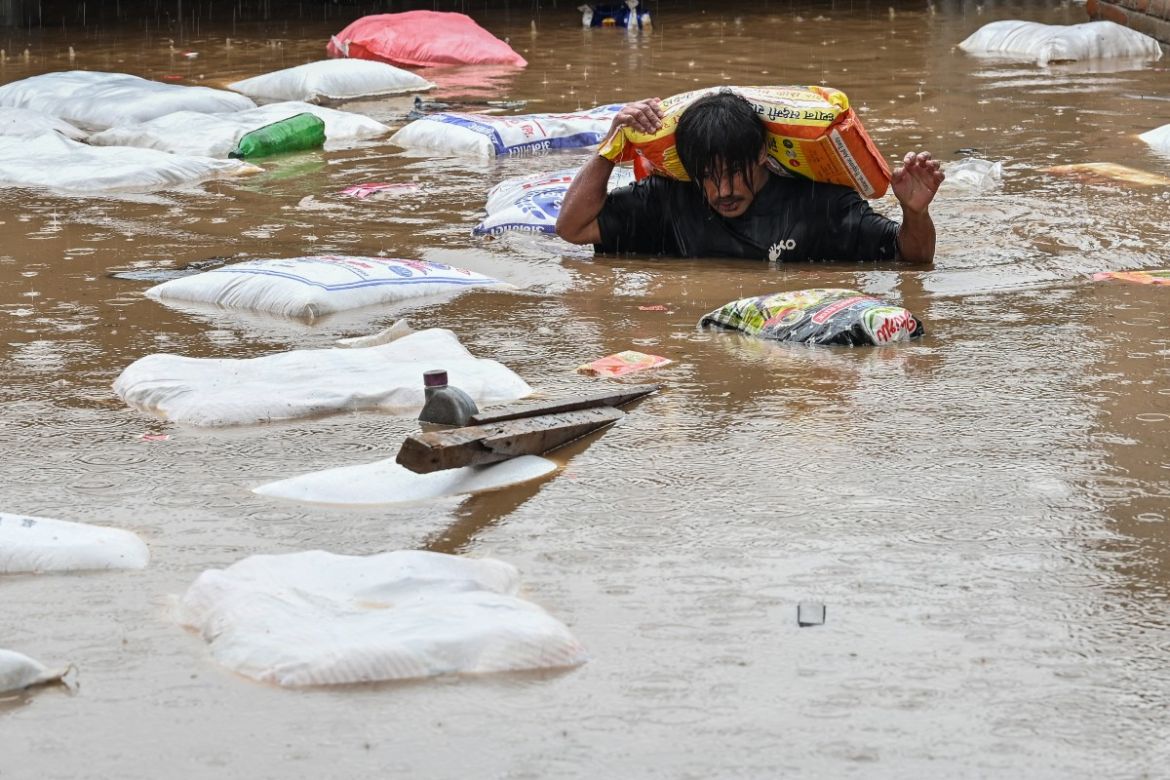In Pictures
A man carrying a sack of flour wades through floodwaters after the Bagmati River overflowed following heavy monsoon rains in Kathmandu. [Prakash Mathema/AFP]Published On 30 Sep 202430 Sep 2024
Search and rescue teams in Nepal’s capital have been picking through wrecked homes as floodwaters have started to recede.
Officials reported on Monday that the death toll from the monsoon floods and landslides had risen to 193 around the Himalayan nation. At least 31 others were missing and many others injured, police said.
Entire neighbourhoods in Kathmandu were inundated after the heaviest rains in more than two decades, with the capital temporarily cut off from the rest of the country after landslides blocked highways.
“Our focus is on search and rescue, including people who have been stranded on highways,” said Ministry of Home Affairs spokesman Rishi Ram Tiwari.
Deadly floods and landslides are common across South Asia during the monsoon season, lasting from June to September, but experts say climate change is making them worse.
The International Centre for Integrated Mountain Development, a Nepal-based think tank, said the disaster had been made worse by unplanned urban encroachment around the Bagmati River, which courses through the capital.
Nepal’s army said more than 4,000 people had been rescued using helicopters, motorboats and rafts.
Bulldozers were being used to clear nearly two dozen sections of main highways leading into Kathmandu that had been blocked by debris.
Nepal’s weather bureau said preliminary data from stations in 14 districts measured record-breaking rain in the 24 hours to Saturday morning.
A monitoring station at the Kathmandu airport recorded about 240mm (9.4 inches) of rain, the highest since 2002.
The monsoon season brings 70-80 percent of South Asia’s annual rainfall and is vital for agriculture and food production in a region home to about two billion people.
But monsoon rains also bring widespread death and destruction in the form of floods and landslides.
Experts say climate change has worsened their frequency and intensity.
More than 300 people have died in Nepal in rain-related disasters this year.
